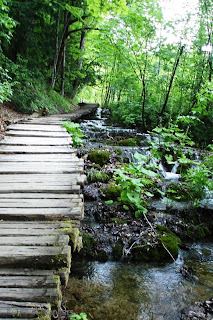
 With a rich supply of blue-green algae, the UNESCO-listed travel wonder of Lake Nakuru plays host to immense quantities of flamingos, one of the greatest bird pageants on the planet. From afar at vista points such as Baboon Cliffs, the vast flamingo numbers give the rich saline soda lake an appearance of candy pink stripes.
With a rich supply of blue-green algae, the UNESCO-listed travel wonder of Lake Nakuru plays host to immense quantities of flamingos, one of the greatest bird pageants on the planet. From afar at vista points such as Baboon Cliffs, the vast flamingo numbers give the rich saline soda lake an appearance of candy pink stripes. With the flamingos typically in the shallow shores of the lake, nothing beats sitting quietly near the edge (Pelican Point seems best - see map) and watching them methodically go about their business. Mainly feeding, they also spend time parading on their skinny angular legs, the pink straw-like legs reflecting in the deep blues of the lake. The fading afternoon light leaves a silhouetting effect against the background hills.
With the flamingos typically in the shallow shores of the lake, nothing beats sitting quietly near the edge (Pelican Point seems best - see map) and watching them methodically go about their business. Mainly feeding, they also spend time parading on their skinny angular legs, the pink straw-like legs reflecting in the deep blues of the lake. The fading afternoon light leaves a silhouetting effect against the background hills. In places, baboons and hyenas pace the shores in hope of a meal but the briny alkaline water provides a natural protection for these mesmerising birds and frustration for these opportunist carnivores.
In places, baboons and hyenas pace the shores in hope of a meal but the briny alkaline water provides a natural protection for these mesmerising birds and frustration for these opportunist carnivores.The flamingos feed busily but nervously, their heads bobbing up and down continuously. If one flamingo spooks a little and seeks the sanctity of the sky, suddenly whole flocks take flight with an ungainly savage flapping of their wings. Despite their take-off, they fly gracefully, their long necks craning forward supporting their strange beak. Unusually, they eat with their beak upside-down, using it to filter the lake silt from the small shrimps and algae that they eat and which gives them their vivid pink coloring (apparently caused by the same chemical that makes carrots orange). I wonder if that gives them good eyesight?
 The lake is protected as a national park complete with the usual cross-section of African wildlife including giraffe, zebras, lions, antelope and leopards. The park is actively assisting in the breeding and protection of the highly endangered white rhinoceros. It is encouraging to see these elegant animals waddling along with their broad mouths hoovering up the grass, rarely lifting their head from the joyous chore of eating.
The lake is protected as a national park complete with the usual cross-section of African wildlife including giraffe, zebras, lions, antelope and leopards. The park is actively assisting in the breeding and protection of the highly endangered white rhinoceros. It is encouraging to see these elegant animals waddling along with their broad mouths hoovering up the grass, rarely lifting their head from the joyous chore of eating. The wildlife of the extraordinary Rift Valley is one of Africa's most compelling experiences (I rate it as second in my African top ten). Whether at dawn or dusk, being in the live audience to nature's greatest wildlife show leaves lifetime memories.
The wildlife of the extraordinary Rift Valley is one of Africa's most compelling experiences (I rate it as second in my African top ten). Whether at dawn or dusk, being in the live audience to nature's greatest wildlife show leaves lifetime memories.The travel wonder of Lake Nakuru makes a wonderful couple of days only 100 miles from the Kenyan capital of Nairobi. Beyond the wonderful flamingo pageant, the likelihood of seeing the rhinos on the wide open plains makes it a wildlife experience to savor.






